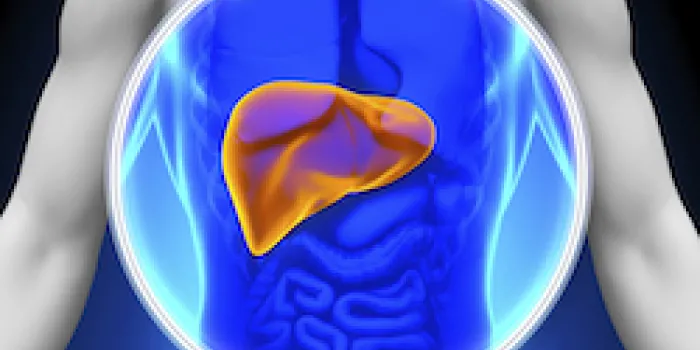Amoxicillin heals your ear infection, acetaminophen relieves your headache and comfrey tea settles your stomach. However, depending on your age and the dosage, all three of these can injure your liver. That’s why the American College of Gastroenterology (ACG) released new guidelines for practitioners in June 2014. It wants physicians to be aware that certain over-the-counter (OTC) and prescription medicines, as well as some herbal medicines and dietary supplements, can harm the liver.
But patients also need to know that drugs can impair liver function. And everyone needs to manage their medications wisely.
Liver functions
The liver is located beneath your diaphragm, protected by the rib cage. It is made up of lobes, subdivided into lobules. The hepatic artery and hepatic portal vein transport blood into and out of the liver; the bile duct carries bile, which helps digest fats. The liver is a multitasking organ that not only produces clotting factors, but also bile, lymph, cholesterol and triglycerides. It is the site where insulin prompts the conversion of glucose to glycogen, a source of quick energy. The liver is responsible for metabolizing, or breaking down, toxic chemicals, including medications, herbal products, vitamins, minerals and supplements.
Risk factors
Drugs are not equal-opportunity agents. There are differences between men and women, children and adults, and people of different races in how we process drugs. For instance, children’s livers are more sensitive to damage from antimicrobial drugs, including minocycline for acne. Women are at higher risk of liver damage from methyldopa, which treats high blood pressure. African Americans have higher rates of acute liver injury from isoniazid, a tuberculosis drug.
Other factors that increase the risk of hepatotoxicity (liver damage from drugs and other chemicals) include hepatitis C virus (HCV), HIV, diabetes mellitus, heavy alcohol consumption, smoking and obesity.
How the damage is done
The very drugs we take to improve our health can hurt the liver. They and their breakdown products can cause hepatitis, or inflammation, resulting in the death of liver cells called hepatocytes. Hypersensitivity reactions to medications can also injure the liver.
Acetaminophen or aspirin can result in so-called “acute dose-dependent liver damage”—the greater the amount, the more severe the harm. Liver granulomas, small areas of inflamed tissue, can develop after using aspirin, phenytoin (antiseizure medication) and isoniazid. Amoxicillin, cephalosporin and penicillin can block the flow of bile, a condition called chronic cholestasis, leading to jaundice. Anabolic steroids, oral contraceptives and estrogen can all promote the growth of liver tumors. In patients with the co-morbidities HIV and HCV, HIV accelerates liver damage caused by HCV or hepatitis B virus (HBV). Additionally, some HIV prescription drugs have been linked to hepatotoxicity.
Other therapies damage blood vessels in the liver. These include anabolic steroids, oral contraceptives and excess intake of vitamin A. The drug methotrexate, prescribed for some cancers, rheumatoid arthritis and severe psoriasis, can cause fatty liver, a buildup of triglycerides.
Rounding up suspects
If you’ve seen drug commercials on TV, then you’re familiar with their lengthy lists of side effects. But you may not know that the most common reason to withdraw a drug from the market is liver injury. And although hundreds of drugs can damage the liver, the ACG cites antibiotics and anti-epileptics (seizure drugs) as accounting for more than 60% of cases.
As popular as acetaminophen is as a pain reliever, it is the number one cause of hepatotoxicity. According to the National Institutes of Health (NIH), it’s also the most common cause of acute liver failure in the US, responsible for half the incidences. So be careful not to exceed the daily recommended dose or take it for prolonged periods.
Other suspects on the liver damage list include:
- Nonsteroidal anti-inflammatories, such as ibuprofen and naproxen
- Antibiotics, such as amoxicillin, erythromycin and tetracycline
- Isoniazid
- Statins, cholesterol-lowering drugs
- Amiodarone, which regulates heart arrhythmias
- Anabolic steroids
- Oral contraceptives
- Chlorpromazine (antipsychotic)
- Methyldopa (for high blood pressure)
- Methotrexate
- Phenytoin, which treats epilepsy
- Excessive amounts of vitamin A and iron
- Herbal products, such as chaparral, comfrey tea, kava and green tea extract pills
In 2012, NIH launched LiverTox®, a searchable database of the hepatotoxicity of dietary supplements, drugs and herbals. Although geared toward healthcare professionals, consumers may find it helpful. The Drug-Induced Liver Injury Network (DILIN) of the National Institute of Diabetes and Digestive and Kidney Diseases conducts clinical trials on drugs and on herbal and dietary supplements (HDS) to determine hepatotoxicity. Growing evidence suggests that bodybuilding agents, such as anabolic steroids, and HDS can increase liver injury.
Symptoms set in
Depending on the drug, symptoms of liver damage can begin right away or show up later, sometimes taking months or years to develop. Symptoms can include:
- abdominal pain
- fatigue
- fever
- headache
- jaundice and/or rash
- decreased appetite
- diarrhea
- nausea and vomiting
- dark urine
- white or clay-colored stools.
Confirming a case
Your doctor may order blood tests to confirm that your liver enzymes, biochemical markers of liver inflammation and injury, are elevated. The enzymes tested include aspartate transaminase (AST), alanine transaminase (ALT) and alkaline phosphatase (ALP). The blood test may also include albumin and total proteins. Measuring bilirubin, a breakdown product of red blood cells, can also confirm liver impairment. In some cases, liver biopsy may be recommended, especially if there’s suspicion of fibrosis (scarring) or cirrhosis.
Fortunately, liver enzyme levels typically return to normal with a few weeks to months after eliminating the medication. But the best way to prevent liver damage is to avoid known offenders. Minimizing your lifestyle risk factors, such as smoking, alcohol abuse and overeating, and replacing them with a healthy diet and exercise can also help.
LEARN MORE
NIH’s LiverTox database.
Visit ACG’s Patient Center.
Find out more about DILIN or to enroll in a study.

